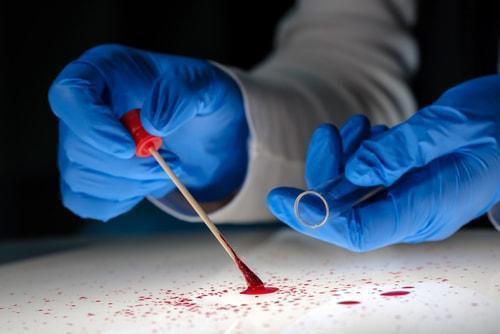Texas Case Highlights Concerns About Blood-Spatter Evidence
 When prosecuting a high-profile criminal case, prosecutors will go to great lengths to provide enough evidence for the jury to convict the defendant on the charges at hand. In many cases, such evidence comes in the form of forensic analysis and conclusions made by the individual who made the analysis. Because such topics are often dense and difficult to understand, jurors often trust the offered testimony because they are told that the individual has been trained in a particular field. Sometimes, however, the such “evidence” and conclusions lack scientific support, as a case in Texas recently demonstrated.
When prosecuting a high-profile criminal case, prosecutors will go to great lengths to provide enough evidence for the jury to convict the defendant on the charges at hand. In many cases, such evidence comes in the form of forensic analysis and conclusions made by the individual who made the analysis. Because such topics are often dense and difficult to understand, jurors often trust the offered testimony because they are told that the individual has been trained in a particular field. Sometimes, however, the such “evidence” and conclusions lack scientific support, as a case in Texas recently demonstrated.
The Murder Trial
In 1985, a Texas jury convicted a high school principal of murdering his wife. One of the key pieces of evidence was blood found on a flashlight in the trunk of the man’s car. Despite the man’s claims that he was asleep in a hotel room 120 miles away from the murder scene, a police detective analyzed the bloodstain patterns on the flashlight and concluded that the flashlight was being held at the time of the murder. The detective—who had undergone about 40 hours of blood spatter analysis training—claimed that bloodstains were consistent with “back spatter” from a close-range shooting. Since the trial took place in 1985, DNA testing was not available to confirm that the blood belonged to the murder victim, but it was determined to be the right blood type—but type O could be a match for about half of the U.S. population.
Earlier this year, The New York Times and Pro Publica began looking into the case that is now 30-plus years old. The renewed interest caused the Texas Forensic Science Commission to review the case as well.
An Independent Review
Last month, a different blood spatter expert presented a review of the initial analyst’s work. This new expert spent more than 60 hours going over the data and the detective’s conclusions, determining that his results were not supported by any real science. She disputed a number of the detective’s claims, as well as his methodology. Perhaps the most important point was her conclusion that the blood on the flashlight was not consistent with back spatter from a close-range shooting.
The new expert was not hired by defense lawyers or innocence groups. In fact, she currently works as a crime scene investigator in Montgomery County, Texas, which means she was critiquing the work of fellow law enforcement officers.
The Future
The next step for the convicted man—who is now 77 years old—is an evidentiary hearing later this month. A three-judge panel will determine if there is enough evidence to warrant a new trial.
In meantime, the Texas Forensic Science Commission has recommended that law enforcement officers with minimal training should not be allowed to testify regarding blood spatter and pattern analysis. If such evidence is to be presented, it must be done by an organization that is accredited and recognized as scientifically sound. Other states are expected to follow suit quickly.
Call Us for Help
Unfortunately, unreliable testimony and questionable evidence have resulted in the conviction of many innocent defendants. If you are facing criminal charges, it is important to work with an experienced Connecticut criminal defense attorney who understands how to recognize and challenge shaky evidence. Call 860-290-8690 for a free, no-obligation consultation at Woolf & Ross Law Firm, LLC today.
Sources:
https://www.nytimes.com/2018/07/24/us/joe-bryan-blood-spatter.html
https://features.propublica.org/blood-spatter/joe-bryan-conviction-blood-spatter-forensic-evidence/






